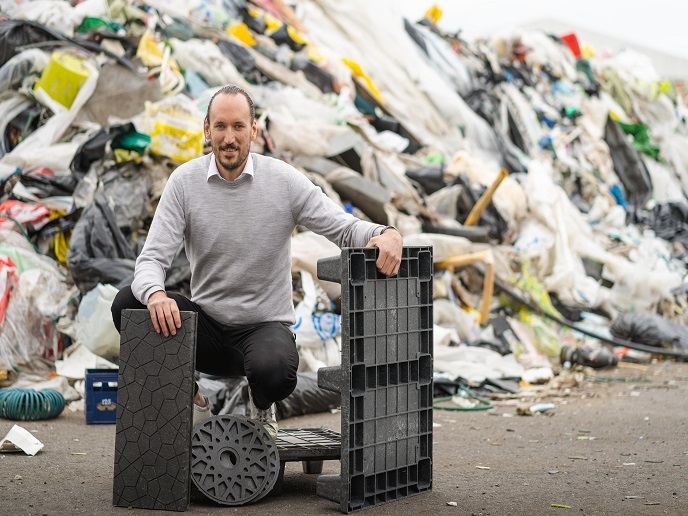Mixed-plastic recycling finally cracked
For all their convenience, plastics create many problems as well. Most are lightweight, so easily transported by wind or water, and persistent in the environment. Plastic pollution is such a serious problem, and worsening at such a rapid rate, that by 2050 the oceans are projected to contain more plastic than fish. The ideal situation would be to recycle plastic. Unfortunately, that is not simple. One reason is that each of the hundreds of different plastics require different treatment. The mixed way in which plastic is collected makes recycling very challenging, as the various types are difficult to separate. As of 2016, only 12 % of plastic was recycled of the 260 million t produced each year(opens in new window). The EU wants to change this. Its targets for plastics specify that by 2030, all plastic packaging will be fully reusable, and that 55 % of plastic waste will be recycled. The EU-funded REMAT project helps the EU and other markets achieve such targets. The project primarily considered the feasibility of its recycling concept of the same name. The study included a marketing analysis.
Mixed plastic waste
REMAT’s recycling technology addresses the core issue of why plastic recycling has been difficult. The method is able to accept mixed plastic waste, thereby removing the need for separation. The process chews up old plastics into tiny particles, which are then melted together to form a new composite plastic trade name Wemix®(opens in new window). This is used in the manufacture of new consumer products and replaces numerous conventional materials. Researchers also examined how various waste streams could be best matched with products using those materials. “The main advantage of our technology,” says Minna Sipi, Business Development Manager for REMAT, “is that it permits content variations and impurities in the source material, making sorting and pretreatment easier.” Thus, REMAT’s process can recycle materials that would be difficult or impossible using other technologies like mixed plastics, different kind of fibres e.g. from textiles, paper and board, mineral wool and gypsum .
Big plans
The team has been operating a proof-of-concept plant in Lappeenranta, Finland. This plant is limited in the types and amounts of materials it can process and the types of product it can produce. Full commercialisation of the technology will require further development, including a full-scale, automated facility. REMAT staff have been working towards preparing and testing a full-scale operation, expected to have an initial output of 8 000 t per year. The fact that China and other countries no longer accept exported waste adds to the urgent need for domestic European plastic recycling. “Now, the amount of waste that can no longer be shipped abroad is expected to triple,” adds Sipi. “This means 2.9 million t of plastic piling up annually with nowhere to go. So our business potential is huge.” REMAT’s patented technology will help Europe reach its recycling targets. This also avoids having to incinerate plastic, as well as the vast amounts of greenhouse gases this creates.







